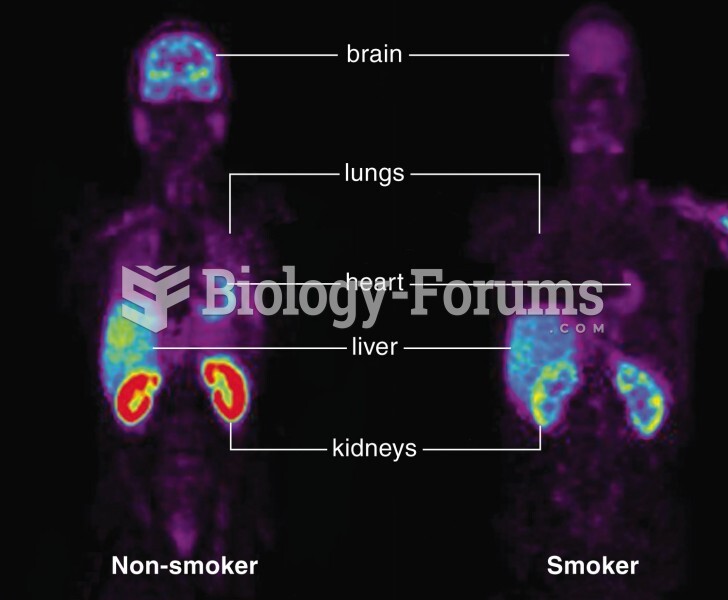This topic contains a solution. Click here to go to the answer
|
|
|
Did you know?
The U.S. Preventive Services Task Force recommends that all women age 65 years of age or older should be screened with bone densitometry.
Did you know?
When blood is exposed to air, it clots. Heparin allows the blood to come in direct contact with air without clotting.
Did you know?
Human stomach acid is strong enough to dissolve small pieces of metal such as razor blades or staples.
Did you know?
Thyroid conditions may make getting pregnant impossible.
Did you know?
There are 60,000 miles of blood vessels in every adult human.
 Glioma. (a) Illustration of a large glioma (colored area) within the left cerebral hemisphere in a s
Glioma. (a) Illustration of a large glioma (colored area) within the left cerebral hemisphere in a s
 (A) PET scan of a healthy patient. (B) PET scan of a patient with schizophrenia. This patient will ...
(A) PET scan of a healthy patient. (B) PET scan of a patient with schizophrenia. This patient will ...





